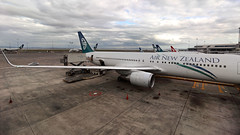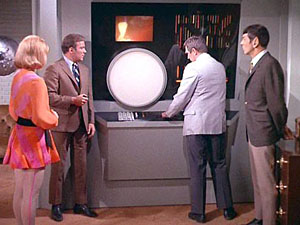 Ah, “Assignment: Earth” – the episode most famous as being a backdoor pilot for a new series that Gene Roddenberry was planning, to be called, oddly enough, Assignment: Earth. Only that series never got the go ahead, so we’re left with this as the only chronicle of the adventures of Gary Seven and his secretary Roberta Lincoln (barring some half-hearted comics and mentions in a few Trek novels, apparently).
Ah, “Assignment: Earth” – the episode most famous as being a backdoor pilot for a new series that Gene Roddenberry was planning, to be called, oddly enough, Assignment: Earth. Only that series never got the go ahead, so we’re left with this as the only chronicle of the adventures of Gary Seven and his secretary Roberta Lincoln (barring some half-hearted comics and mentions in a few Trek novels, apparently).
The episode begins with the Enterprise in orbit about Earth – in 1968 thanks to a slingshot time travel manoeuvre (which seems to be second nature now after its discovery in “The Naked Time“. They’ve gone back to observe Earth in this “historically significant time period” for some ill-defined “historical mission“. Really, is this the sort of thing starships are assigned to do? They don’t have historians to do this, while Starfleet, I dunno… explores strange new worlds or protects the Federation from Klingons or something?
Anyway, while observing, Scotty intercepts a transporter beam from the mind-boggling distance of over 1000 light years away. A well-dressed man with a black cat materialises in the transporter room, introduces himself as Gary Seven, and explains he is a human being sent home to Earth from a distant planet of benevolent aliens on a mission to save humanity from its nuclear excesses. In a brief fight scene we see that Seven is immune to Spock’s Vulcan nerve pinch, which makes Kirk suspicious. Kirk is rightly sceptical and dithers about whether to hold Seven prisoner or let him go. Seven quickly makes this a moot issue by escaping and beaming down to a groovy 1960s pad in New York, despite having a security guard posted right outside his cell. Fortunately for Seven, the guard stands with his back to the cell, allowing Seven to use an electronic gadget that they should have found when they frisked him – unless of course the security on board the Enterprise is so lax that they let prisoners keep all their gadgets and sit in cells with nobody actually watching them…
Seven activates an ultra-modern computer system in the pad. You can tell it’s ultra-modern because it has voice command, not because it’s small – in fact it almost fills an entire room with consoles and flashing lights. The computer reports that Agents 201 and 347, who he is checking up on, apparently died in a car crash on their way to preventing an American orbital nuclear platform launch. Apparently in 1968 everybody had a bunch of orbiting nuclear warheads and World War III was only averted by a balance of terror in space. While determining this, the deceased agents’ secretary, one Roberta Lincoln, arrives and is boggled at Seven’s displays of technological wizardry. He tells her he works for the CIA, then runs off to sabotage the rocket launch. Spock and Kirk meanwhile have beamed down and found him, and race to follow.
Seven fiddles with the rocket while Kirk and Spock are captured by security guards and detained. Kirk ponders the situation, still not sure if Seven needs to succeed or be thwarted in order for history to be preserved. He says, “I’ve never felt so helpless,” – which fits nicely because the plot is really about Gary Seven. The rocket takes off, Scotty beams Spock and Kirk to Seven’s groovy pad, and there’s a showdown between them as Roberta manages to do what Spock couldn’t and knocks Seven out by whacking him on the head with a briefcase. Kirk now controls the computer, but must decide whether or not to trust Seven and self-detonate the rocket, or allow it to crash. Spock tells him there is no data to make a decision, so it cannot be made logically, and Kirk should trust his human intuition. He does so, trusting Gary, and the rocket is blown up before it can start World War III. Fortunately, Spock later confirms this is what was supposed to have happened all along.
In the denouement, Roberta sees Gary’s cat as a slinky woman and inquires jealously, but when she looks back it’s just a cat again. Kirk and Spock leave, assuring Roberta (and the audience) that they will have more memorable adventures. Of which we never get to see any, since the pilot was never picked up. It’s actually not a bad story, and makes a decent episode… of Assignment: Earth. It’s not a great episode of Star Trek, though, because Kirk and Spock never really do anything. As such, it sticks out a bit and fits oddly within the series.
Tropes: Poorly Disguised Pilot, Dolled Up Installment, Twenty Minutes Into The Future, Excellent Adventure, You Are Number Six, Ultraterrestrials, Big Applesauce, Force Field Door, Magic Tool, Sword Of Damocles, Cool Gate, Mistaken For Spies, Time Travellers Are Spies, Self-Destruct Mechanism, You Already Changed The Past.
Body count: Agent 201 and Agent 347, killed in a car accident off-screen.

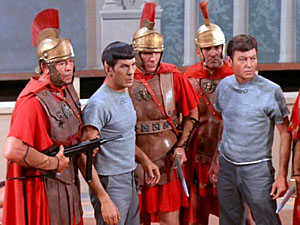 “
“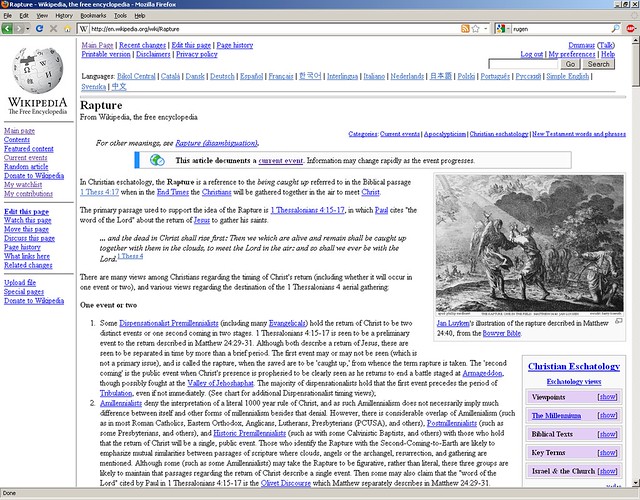
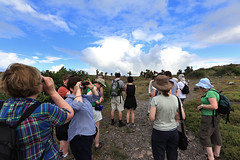

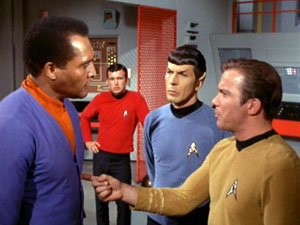 “
“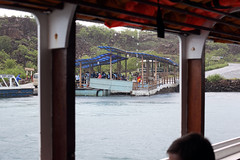
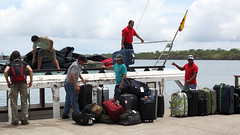
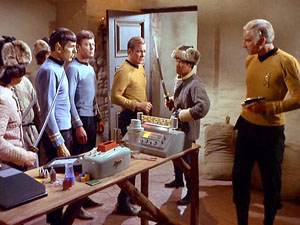 Back into the reviews after my vacation! Unfortunately, the next episode is “
Back into the reviews after my vacation! Unfortunately, the next episode is “